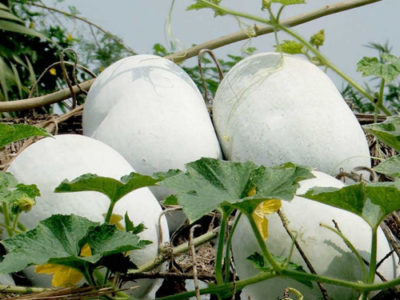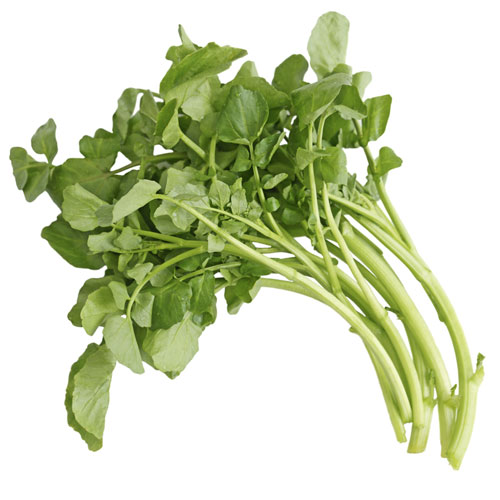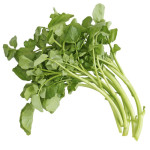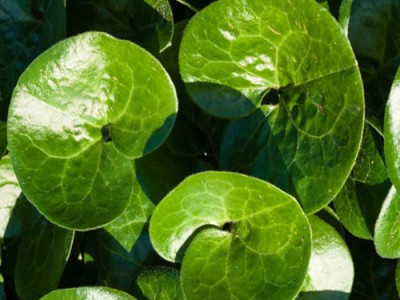

Water cress or Yellowcress
Watercress-Facts and Benefits
Scientifically known as Nasturtium officinale; watercress is also known as Chinese watercress. These are aquatic plants in nature and are found floating in small springs and streams where they are cultivated. These are attractive looking plants that give rise to white flowers and small pods. They are known for its edible leaves that is highly nutritious and flavoursome. This vegetable is known for its versatility as it goes well with every ingredient and compliments the flavours of the dish. Water cress was once eaten for sustaining life in regions of Europe and U S A as it was easily available, it was affordable and also was nourishing the body with vital nutrients. People used to buddle the bunch and munch it on like an on the go sandwich; the fact being that watercress was less expensive than the latter. Watercress is also known as the healing herb since 400 B.C and was popular for its medicinal properties.
Watercress Nutrition Value
- Vitamin K is by far the most prominent nutrient in watercress.
- It strengthens the bones and limits neuronal damage in the brain, which is helpful in treating Alzheimer’s disease.
- It also has vitamin C, with 72% of the daily value, closely followed by vitamin A with 64%.
[tribulant_slideshow gallery_id="6"]
Watercress Health Benefits
- It has antiviral, antibacterial properties.
- Help soothe the airways and reduce coughing.
- It prevent the formation of kidney stones or the gallbladder.
- Helps to clean the organ and facilitate its recovery.
Interesting Facts
Watercress grows very well in freshwater springs or in water that is clean and fast flowing.
Water Cress for Thick Hair
Watercress has a long-standing reputation as a hair tonic, helping to promote the growth of thick hair when rubbed on the head.
| Principle | Nutrient Value | Percentage Of RDA |
| Energy | 11 kcal | <1% |
| Carbohydrates | 1.29 g | 1% |
| Protein | 2.30 g | 4% |
| Total Fat | 0.10 g | 0.5% |
| Cholesterol | 0 mg | 0% |
| Dietary Fiber | 0.5 g | 1% |
| Vitamins | ||
| Folates | 9 µg | 2% |
| Niacin | 0.200 mg | 1% |
| Pantothenic acid | 0.310 mg | 6% |
| Pyridoxine | 0.129 mg | 10% |
| Riboflavin | 0.120 mg | 9% |
| Thiamin | 0.090 mg | 7.5% |
| Vitamin A | 3191 IU | 106% |
| Vitamin C | 43 mg | 72% |
| Vitamin E | 1.0 mg | 7% |
| Vitamin K | 250 µg | 208% |
| Electrolytes | ||
| Sodium | 41 mg | 3% |
| Potassium | 330 mg | 7% |
| Minerals | ||
| Calcium | 120 mg | 12% |
| Copper | 0.077 mg | 8.5% |
| Iron | 0.20 mg | 2.5% |
| Magnesium | 21 mg | 5% |
| Manganese | 0.244 mg | 11% |
| Phosphorus | 60 mg | 8% |
| Selenium | 0.9 µg | 1.5% |
| Zinc | 0.11 mg | 1% |
| Phyto-nutrients | ||
| Carotene-ß | 1914 µg | — |
| Carotene-a | 0 µg | — |
| Lutein- zeaxanthin | 5767 µg | — |
Watercress is a very light vegetable as it has very low calorie content. One serving of 100 grams of watercress consists of 11 calories. This is a boon to everyone counting their calories and watching their weight. It is often told to us eat greens to stay fit; this is a proven fact that watercress and other members of the curciferous family are highly nutritious and should be made staple in every day’0s diet. Rich in Vitamin A vitamin B Fibre and proteins, this food is also cruciferous in nature. The unique thing about cruciferous plants is that they are rich in phytochemicals, a compound only derived from plants. Cruciferous plants contain a high source of glucosinolates that prevents the body from cancer also rich in anti oxidant property this plant is rich in elements that fights cancer cells and helps in recovery from cancer. Calcium and potassium helps in controlling hyper tension and blood pressure; these vital elements are found largely in this plant. This vegetable can satisfy
the need of daily intake of vitamins and proteins and also aid in good eye sight. Water cress is a highly recommended food for all pregnant mothers as it is highly nutritious and rich in folic acid that aids in lactation. The latest use of watercress is in treating diseases like swine flu and other ordinary flu caused due to congestion in lungs and chest. Watercress is also used in treating bronchitis and cough and other breathing problems. Baldness a problem faced in late 40’s can be treated with water cress.
How To Enjoy Water Cress
Water cress is a light plant; versatile in nature and go well with every cuisine. They can be eaten raw in salads or tossed in olive oil with other vegetables and served as accompaniment with flavoured rice.
Water cress can be used in a puree to make different styles of pasta and ravioli. Watercress can be used to make soups and also as a garnish served on top of various dishes.



